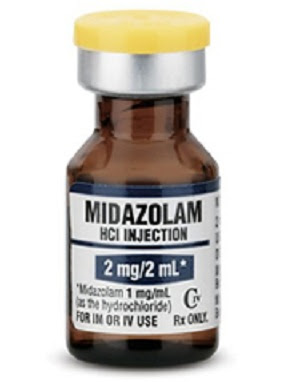I have been very happy with the EMS Expo in New Orleans. I did some podcasting, made some new friends, attended some great presentations, and had a bit of a New Orleans Halloween. I was anticipating an interesting review of some important research relevant to EMS from the past year.
This presentation provides an overview of the most important and impactful EMS research that has been published or presented in the last year. Papers will be reviewed that have been presented at the most recent meeting of the National Association of EMS Physicians or published in such journals as Prehospital Emergency Care, Annals of Emergency Medicine, Academic Emergency Medicine and others.[1]
To claim that I was disappointed with the research review would be an understatement.
The first impactful review is the RAMPART study.
There is something that need to be highlighted from this paper.
The more rapid termination of seizures at the doses used in the study.
The more rapid termination was mentioned, but the doses used were not mentioned.
Why not? Who knows?
All adults and those children with an estimated body weight of more than 40 kg received either 10 mg of intramuscular midazolam followed by intravenous placebo or intramuscular placebo followed by 4 mg of intravenous lorazepam.[2]
These doses may be considered too large by some medical directors.
My protocols do not include IM (IntraMuscular) midazolam (Versed) for adult seizures, but my protocol doses of IV (IntraVenous) lorazepam (Ativan) may only reach a maximum of 4 mg after several repeat doses. This study used lorazepam as a single 4 mg IV dose.
Is there any good study to demonstrate equal efficacy with smaller doses?
Is there any good reason to expect that smaller doses would decrease the rate of intubation?
[2]
Midazolam in an autoinjector was evaluated in an open-label dose escalation study involving 39 healthy participants. Safety and pharmacokinetic parameters were determined for doses ranging from 5 to 30 mg. No serious adverse events were noted during the study. Two participants (30 mg) experienced changes in their electrocardiogram (trigeminy and prolongation of QRS complex) that met the criteria for dose-limiting adverse events. No significant respiratory depression was noted during the study.[3]
Doses of up to 30 mg IM midazolam in healthy subjects did not produce any significant respiratory depression.
The adult lorazepam IV doses in the study is the dose recommended by the FDA label –
For the treatment of status epilepticus, the usual recommended dose of Lorazepam Injection is 4 mg given slowly (2 mg/min) for patients 18 years and older. If seizures cease, no additional Lorazepam Injection is required. If seizures continue or recur after a 10- to 15- minute observation period, an additional 4 mg intravenous dose may be slowly administered.[4]
But everybody knows that intubation of seizure patients only happens because of the benzodiazepine! Right?
Probably not with seizure patients.[5]
The relationships among benzodiazepine dose, respiratory depression, and subsequent need for endotracheal intubation are poorly characterized, but higher doses of benzodiazepines may actually reduce the number of airway interventions. Our data are consistent with the finding that endotracheal intubation is more commonly a sequela of continued seizures than it is an adverse effect of sedation from benzodiazepines.11 [2]
We appear to be giving too much consideration to possible complications that might be related to the medications, but appear to be more likely to be because of a failure to use enough medication.
This is important and our failure to use enough midazolam may be very dangerous to our patients.
If we change from an often ineffective IV dose of lorazepam to an often ineffective dose of IM midazolam, are we making things any better?
We have good evidence of benefit, but we do not have good evidence of harm, so we worry about the harm. This is the opposite of our approach to epinephrine, where we have a lot of evidence of harm, but no good evidence of benefit.
To be continued in IMMEDIATE and Epinephrine parts.
–
Footnotes:
–
[1] Current Topics in EMS Research
Nov 1 2012 4:30PM
Room: 219
Category: Educator
Jonathan R. Studnek, Ph.D
Conference schedule for Thursday
–
[2] Intramuscular versus intravenous therapy for prehospital status epilepticus.
Silbergleit R, Durkalski V, Lowenstein D, Conwit R, Pancioli A, Palesch Y, Barsan W; NETT Investigators.
N Engl J Med. 2012 Feb 16;366(7):591-600.
PMID: 22335736
Free Full Text from N Engl J Med.
I have written about this in Intramuscular Midazolam for Seizures – Part I,
Part II,
Part III,
Part IV,
Part V,
Part VI,
Misrepresenting Current Topics in EMS Research from EMS Expo – RAMPART,
and Images from Gathering of Eagles Presentation on RAMPART.
–
[3] Human safety and pharmacokinetic study of intramuscular midazolam administered by autoinjector.
Reichard DW, Atkinson AJ, Hong SP, Burback BL, Corwin MJ, Johnson JD.
J Clin Pharmacol. 2010 Oct;50(10):1128-35. Epub 2010 May 13.
PMID: 20466872 [PubMed – indexed for MEDLINE]
–
[4] Lorazepam (lorazepam) Injection, Solution
[Baxter Healthcare Corporation]
DailyMed
NLM
FDA label
–
[5] A comparison of lorazepam, diazepam, and placebo for the treatment of out-of-hospital status epilepticus.
Alldredge BK, Gelb AM, Isaacs SM, Corry MD, Allen F, Ulrich S, Gottwald MD, O’Neil N, Neuhaus JM, Segal MR, Lowenstein DH.
N Engl J Med. 2001 Aug 30;345(9):631-7. Erratum in: N Engl J Med 2001 Dec 20;345(25):1860.
PMID: 11547716 [PubMed – indexed for MEDLINE]
Free Full Text from N Engl J Med.
.




Impactful.
Kinda got stopped right there.